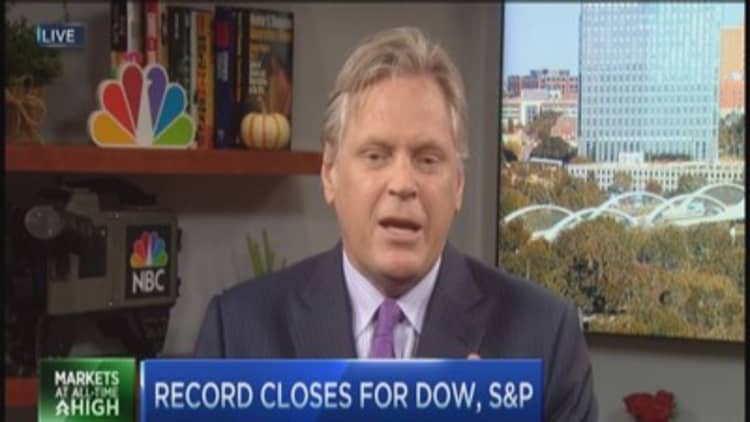
What a week! What an October!
Stocks closed at record highs on Friday with the surging by triple digits and the S&P 500 well over the psychologically important 2,000 level.
For the week, the S&P rose 2.7 percent while the Dow gained 3.4 percent in its biggest weekly advance since January 2013.
The advance was all the more noteworthy considering during October at times approached levels not seen since the 2008 financial crisis.
Going forward David Katz of Matrix Asset Advisors said on CNBC's "Closing Bell" that although he thinks November may be volatile, ultimately he's looking for the rally to advance further; with , technology and possibly leading the way.
Also, he thinks November will be a good month to establish new positions in energy. After looking at patterns over the past decade, Katz said, "After a sharp selloff, you tend to get a sharp bounce back; typically it's 5-8 percent. And it happens over a one to two month period."
Portfolio manager Jim Lacamp of UBS didn't agree. "I need to see a bid on volume before I'd buy," he said, also on "Closing Bell."
Katz, however, thinks waiting too long is a mistake. His research shows, in order to catch the bounce, "You've got to get ahead of it. I think Devon, Chevron and Occidental are all good places to be."
Read More Why Wall Street has not priced in the midterm elections
Elsewhere in the market, LaCamp said, like Katz, he'd put money to work behind industrials, too. And he also cited biopharma and transports as buys, as well as stocks that benefit from a stronger consumer. "We have tailwinds such as lower oil," he said. "And people who have jobs feel more secure they won't lose them."
On the flip side of the coin, Lacamp said in the month ahead he would be cautious of . "I'm a seller of ," added Katz.
Disclosure: Matrix clients and Katz own DVN, OXY. All positions less than 1 percent of shares outstanding.
—Reuters contributed to this report.


